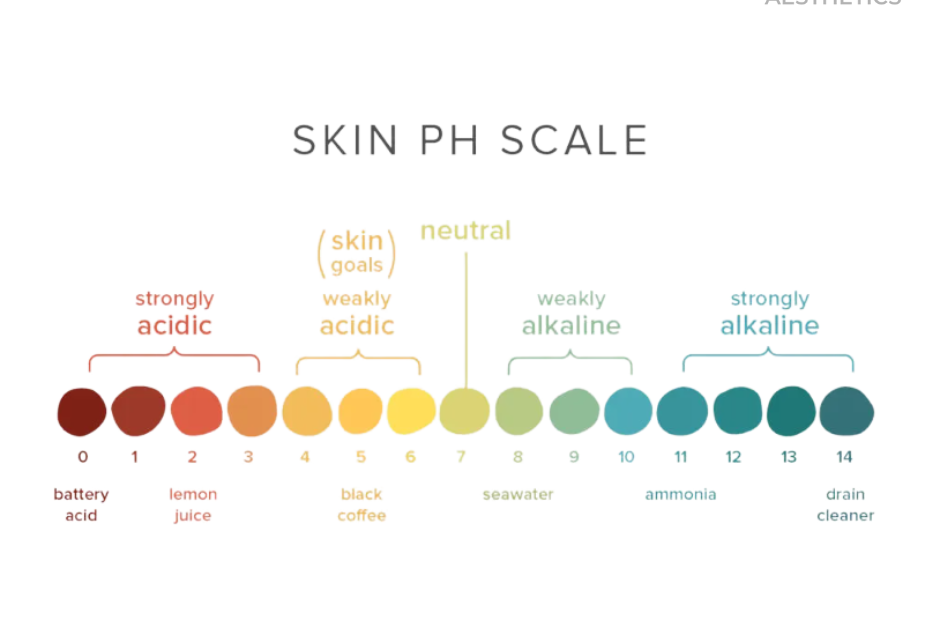Skin pH
What is pH?
The term pH refers to “potential hydrogen” and it concerns the acidity level in your skin’s acidity level and pH levels in skincare products. The pH scale ranges form 1 to 14 with 7 being considered as “neutral”. The lower number on the scale, the higher the acidic level, while the higher number on the scale, the lower the acidity, which is considered alkaline or nonacidic. Anything below 7 is considered acidic, while anything with a pH greater than 7 is alkaline. Differences between pH numbers might seem small, however when you move up my one number on the scale, it is 100 times more powerful then the number below.
What is the pH of Skin?
Healthy skin pH is actually more on the acidic side of the scale. According to a published study in 2006 by the International Journal of Cosmetic Science, the ideal pH is just below 5. There is a variety of research that cites different ranges for the skin’s average pH level; however collected research shows the average being 4.7 to 5. Skin’s acidic pH plays a role in keeping its delicate microbiome balanced. If it is more on the acidity side, your skin has the ability to combat harmful microbes and damaging free radicals that might increase the aging process.
What is Skin’s Acid Mantle?
Skin has a protective film on its surface that is known as the acid mantle. It plays a vital role by working with skin-natural ingredients like ceramides, cholesterol, enzymes, sweat and our skin’s natural oil to protect the surface of our skin and the lower layers from external threats.
pH in Skincare Products
Repeatedly disturbing the skin’s pH to a strong degree can lead to or worsen skin issues and disorders, including dry, tight feeling from washing with a bar or liquid soaps, which most are alkaline. To maintain a healthy skin pH, it is recommended to go with pH-balanced skincare products. “PH balanced” refers to products formulated with a pH that falls within the range of normal, healthy skin.
Research has shown that mild disruptions in skin’s pH (such as from using an AHA or BHA leave-on exfoliant which is pH of 3.6 or a mineral sunscreen with a pH of 7.5) are temporary. The skin naturally equalizes to its normal pH, typically within an hour. There is actually a benefit as research has shown that acidic products stimulate skin to help produce key substances it needs to look smooth, supple and hydrated.
However, using highly acidic (pH 2.5 or lower) or alkaline (pH 8 or greater) products causes a more significant disruption in the skin’s pH, so it takes longer to get back to normal levels. When your skin is more often than not too alkaline or acidic, it disrupts the skin’s barrier, leaving it vulnerable and allowing harmful bacteria to penetrate. This result in breakouts, blotchiness, signs of eczema, redness and sensitivities. Therefore, it is important to consistently use skincare products that do not have a pH too high or too low that will progressively damage the skin.
Things to consider:
· Wash face for long enough to get the most out of your routine and cleanser
· Use a toner which can help neutralize any remaining alkalinity that’s adversely affecting your skin’s optimal pH levels
· Follow with a moisturizer, either it being a lotion, cream, gel etc. Moisturizer may be adjusted for the season and what your skin needs.
· Exfoliate once a week with gentle exfoliants, either physically/manually with a scrub, or chemically with a light acid.
